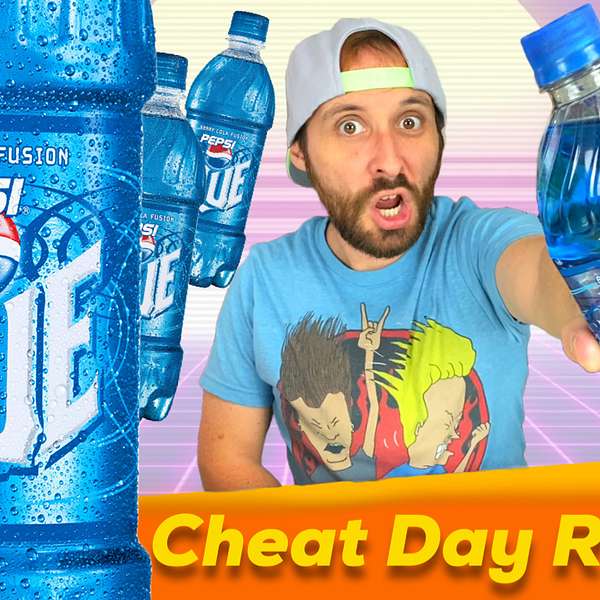
Industrial Industries World Radio
A podcast that is all things and beyond! From the history of toys, restaurants, companies, birthdays... to food reviews, music reviews, funny skits, exclusive made in house songs and interviews, fun facts and so much more, IIWR is your one stop shop and home podcast after a long day or to get your day started off right!
Industrial Industries World Radio
2002 Pepsi Blue Review | Drinking 20 Year Old Soda
Fan mail and questions are welcome!
In this cheat day review we go back to 2002 and try the original release of Pepsi Blue!
Through late 2001 early 2002, test version bottles of pepsi blue bottled and given to people close to Pepsi to try.
These test version bottles were quickly made with the labels being made of paper instead of the standard plastic. This early label also had a line that read “cola with a burst of blue flavor”
All the initial taste tests of the soda were full of high praise.
After 9 months of testing, the name pepsi blue was trademarked on April 25th 2002
In May 2002, a CNN news article quoted Gary Rodkin, CEO of PepsiCo North America at the time, saying “Pepsi Blue has the potential to reinvigorate the cola category”
Pepsi put all their money on Pepsi blue on being a healthy competitor to Coca colas new soda Vanilla Coke. In which Pepsi announced Pepsi blue a week before Vanilla Coke launched on May 8th 2002.
Also in May Pepsi also released a green soda from Sobe called Mr Green. This was a green colored soda that tasted like Dr Pepper but also had ginseng added to it for an energy kick.
August 2002 Pepsi blue was released nationwide in Canada and the United States. It’s packaging and commercials we’re targeting the teenage demographic.
The packaging displayed a tribal tattoo looking design with a sharp knife looking font spelling out the world blue. The soda was described as berry cola fusion with its official flavor simply labeled as “Berry”
People who tried Pepsi blue compared it to a blueberry and cotton candy sweet taste that was much more sugary than regular Pepsi.
Commercials hit tv screens featuring popular bands at the time like papa roach and Sev.
Promotion for Pepsi blue went through the product placement route, making appearances in Garfield: the movie and the Italian job
Upon release it sold fairly well on the basis it was new and had a huge promotional push. But it was plagued with controversy from the start with the ingredient Blue 1 that gave the soda its bright blue color.
Even though blue 1 of brilliant blue as it’s also called is non toxic and safe in food and drink, people still questioned it as it was banned in several countries.
In September of 2003 Blue 1 was slapped with a public health advisory alert of its toxicity when used in feeding tubes. Even though toxicity and death was only reported through the use of feeding tubes, the relation of it being used in Pepsi blue wasn’t a good sign.
May 2004, not lasting more than 2 years on the market pepsi blue was discontinued in the us and canada
Why it failed was a variety of reasons, but the two largest were the blue 1 controversy and the lagging sales after its first year. Pepsi blue seemed to have followed the fate of crystal pepsi with its huge sales in the beginning and then a massive slowdown in sales right after.
But In other countries, Pepsi blue lived on.
Late 2002 Pepsi blue was released overseas for a limited time in the Philippines.
It also was available in India in 2003.
The Netherlands saw a limited release during the holidays of 2003.
In other countries later on saw pop singer Britney Spears promoting the drink in other countries like Vietnam.
Throughout the mid to late 2000’s Pepsi blue popped up in vari
Industrial Industries World Radio Songs and Skits of Seasons 1 & 2 now available everywhere you download and stream music!
Check it out today!
Subscribe to the YouTube channel!
https://youtube.com/@industrialindustriesworldradio?si=vHoN5T7FYD7cvHt7
Podcasts we love
Check out these other fine podcasts recommended by us, not an algorithm.

